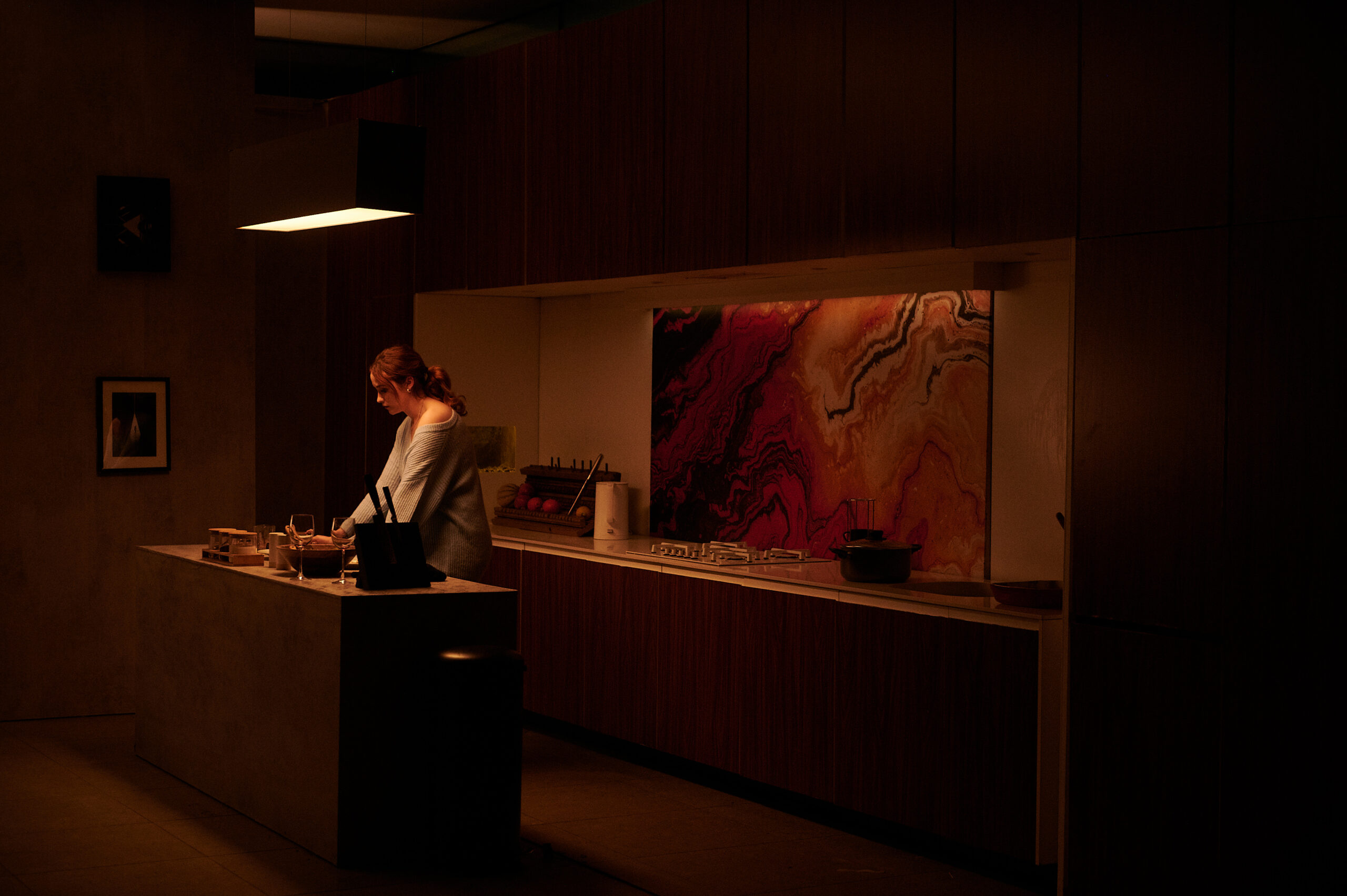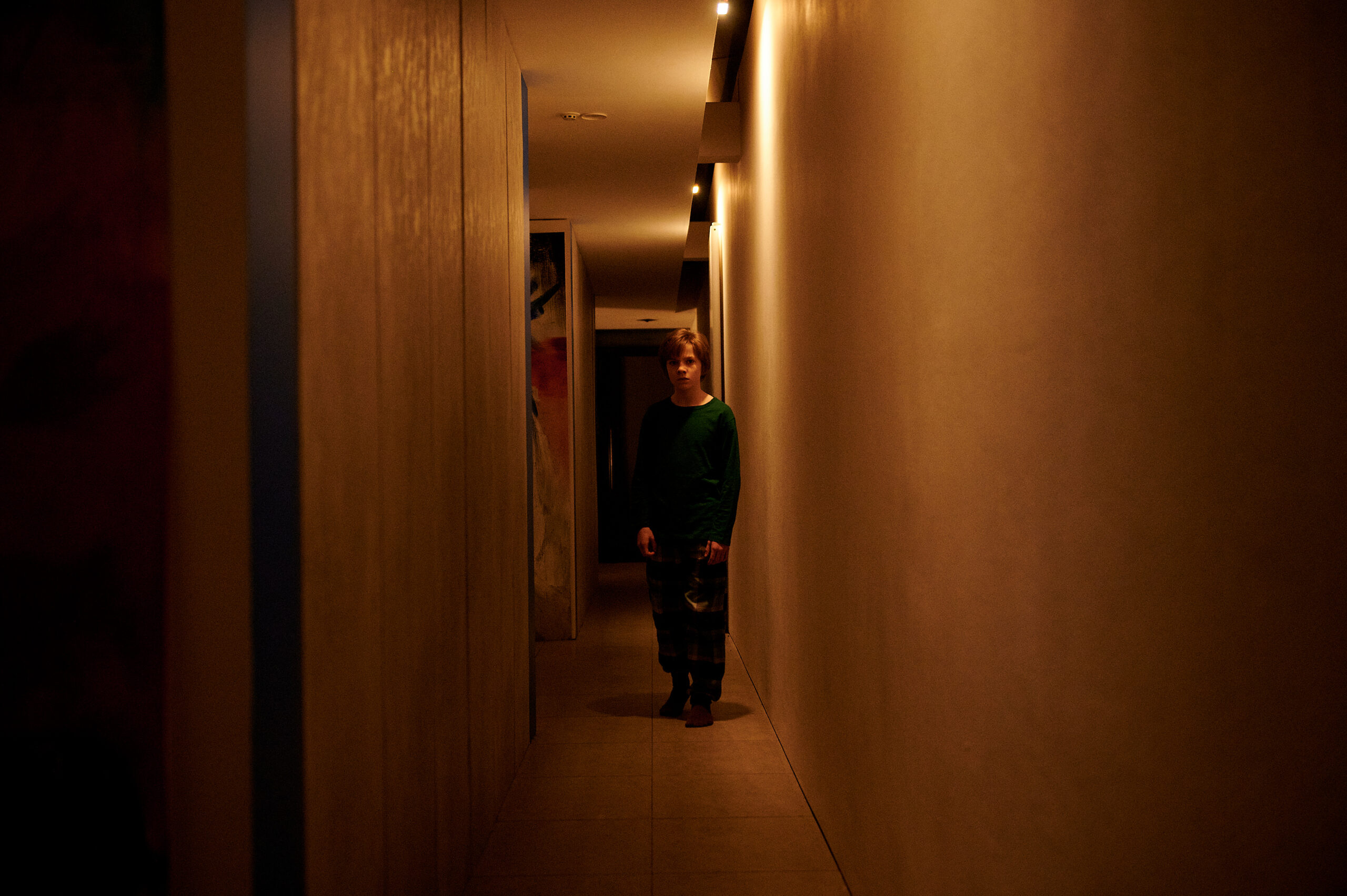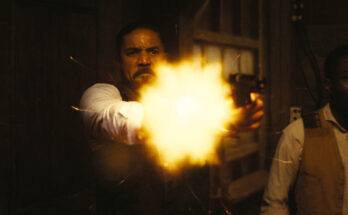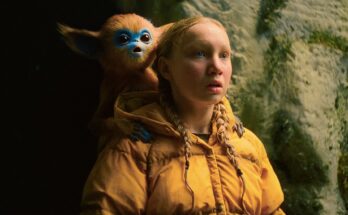Want to hear more from the actors and creators of your favorite shows and films? Subscribe to The Cinema Spot on YouTube for all of our upcoming interviews!
Managing editor & film and television critic with a Bachelor's of Arts in English Literature with a Writing Minor from the University of Guam. Currently in graduate school completing a Master's in English Literature.
Shudder is on a roll with last month’s Fantastic Fest-released films, which I am still catching up on for the next week. My first feature film review, V/H/S/Beyond, looks at how the V/H/S film franchise takes on new meaning with every new installment. Daddy’s Head achieves something similar. While it has been some years since I have seen The Babadook, Shudder’s new horror title likewise examines loss and grief, along with the individual means of processing what or who was taken from them. Despite being a horror film, the narrative doesn’t require a body count to carry it but rather showcases its themes through a story of belief and family matters.
Daddy’s Head is written and directed by Benjamin Barfoot.
In this review, I will discuss Benjamin Barfoot’s Daddy’s Head. As this article’s title suggests, no spoilers will be present.
Daddy’s Head Synopsis
According to Shudder Press, here is the official synopsis for Benjamin Barfoot’s Fantastic Fest feature film, Daddy’s Head.
In the wake of his father’s untimely death, a young boy is left in the eerie solitude of a sprawling country estate with his newly widowed stepmother. Struggling to navigate the overwhelming task of parenthood, his stepmother grows distant, leaving their fragile bond at risk of collapse. Amidst the growing tension, the boy begins to hear unsettling sounds echoing through the corridors, and is soon haunted by the presence of a grotesque creature bearing a disturbingly familiar resemblance to his late father. As the boy’s warnings are dismissed as the imagination of a grieving child, the sinister entity tightens its grip on their crumbling lives.
Shudder Press
Discussion
Daddy’s Head is a decent horror film held in place by its lead actors and its production crew, and it often works. Director of Photography Miles Ridgway’s shots of Isaac (Rupert Turnbull) and his stepmother Laura’s (Julia Brown) home and the outlying forest display the stark contrasts between domesticity and feral territory. Ridgway’s lingering shots of the patriarch, James (Charles Aitken), in his death bed, paired with Barfoot’s musical whirly swirling composition teases the possible horror that follows his surviving family members. A majority of the film’s events serve as a collective flashback to Isaac and Laura’s grieving period, triggered by an older Isaac (James Harper-Jones) returning to the home he once called his own.
The set piece of the household is an interesting architecture, varying from a narrow window in Isaac’s bedroom and ceiling-to-floor glass windows in the living room. Set decorator Cecily Arris’s placements of drawings on the child’s bedroom walls are indicative of Isaac’s imaginative nature and the naivety of being young. The lighting is a remarkable element that is sufficiently effective whenever present. Barfoot edits through these aspects like the sort of smash cut from the monster (Matthew Allen) at the window to the doorbell rung during daytime. He also uses cinematography to pull or push away from Isaac and Laura, luring viewers into the naturalistic environment of the forest and James’s private garden.
Barfoot also displays a neat fantastical sequence consisting of Laura’s hair flowing about and a wine glass dropping to the ground; as well as a dreamlike sequence where Laura approaches the site of James’s accident, weighing deeper in her consciousness. Dialogue editor Maxwell Hoskins plays into haunting scenes where the monster uses its voice to call out to other characters repeatedly. Daddy’s Head demonstrates what’s real and what’s not, what the mind thinks and what the eyes see.
What Is “Daddy’s Head”?
Little is known about the antagonist of Barfoot’s film. The best description I can offer is if Stephen King’s Pennywise wore a bondage costume. James gifts his son a few items shortly before his passing, including a handheld sci-fi shoot-em-up video game. While it’s more to keep Isaac preoccupied, it could be argued to be a sign of the monster as otherworldly, or perhaps an inhuman entity from the earth. The monster takes on the form of the family’s loved ones, e.g. James. The film’s reveal of its full body is an ambivalent sight, from the beholding of all its non-glory to the dim lighting that wraps the monster in gloom.
Ridgway captures the monster with the camera in such a manner as to complement the unease of grieving. It feeds off of pain, whether it be emotionally, physically, or psychologically. Laura has a noteworthy line towards the end that implies one thing but can also be understood as her protecting Isaac from life-threatening outside parties. Barfoot’s writing around these characters is navigated through the “unreliable narrator” technique. Isaac has his childlike point of view, Laura is seen wallowing in her sorrows by a bottle, and family friend Robert (Nathaniel Martello-White) is more of a house guest. Overall, it’s difficult to gauge the full promise of the film if we’re not given the bigger picture.

The Crew Behind Daddy’s Head
Miles Ridgway serves as the film’s cinematographer. Rob Baker Ashton serves as the stills photographer.
Barfoot also serves as the film’s editor, music composer, and visual effects artist.
In sound post, Maxwell Hoskins serves as the supervising dialogue editor. Blair Hollands serves as the supervising sound designer. Han Hibbert serves as the sound designer.
Sally McCleery is the casting director.
Ian Kay serves as the stunt coordinator. Nick Chopping is the stunt coordinator (daily).
Ailís Smith serves as the Laura stunt double.
Declan Price serves as the production designer.
Felix Coles serves as the art director. Cecily Arris serves as the set decorator.
Laura Parkes serves as the costume designer. Jaimee Rose serves as the hair and makeup designer.
Melissa Lee serves as the hair and makeup artist. Ella Louise Tanner and Beth Simmonds are the hair and makeup artists (dailies).
Neill Gorton serves as the creature effects designer.
In the second unit, Isabel Pirillo serves as the production designer, while Lee serves as the hair and makeup designer.

The Cast of Daddy’s Head
Rupert Turnbull portrays Isaac, the young protagonist of the film. James Harper-Jones plays an older Isaac.
Julia Brown portrays Laura, a widow and Isaac’s stepmother.
Charles Aitken plays James, Isaac’s late father/ Laura’s late husband.
Nathaniel Martello-White portrays Robert, James’s best friend and thus a family friend.
Nila Aalia plays Heather.
Mary Woodvine (Enys Men) portrays Mary, a social worker from Social Services.
Matthew Allen portrays the creature.

Performances and Character Developments
Turnbull’s Isaac illustrates a moving image of grief from the perspective of a young person who has no idea how much loss will impact him. He does not register the fact that he is at a big risk of being taken from Laura. Not only that, but he even has an out-of-balance perception of Laura as a woman who cannot provide. For example, he tells social services representative, Mary (Mary Woodvine), “She can’t cook.” As a child, Isaac’s mind is still forming and developing, not realizing what his psychological needs and desires as a human being are. Barfoot makes a good point for Isaac, but also Laura, that they need love to them free from loss.
Comparatively, Brown’s role as Laura involves the lack of experience with being a mother figure. Laura has had a drastically different life prior to meeting James and Isaac. This has its own backstory that Laura rather copes with through alcohol abuse. What’s appreciative about Laura is her willingness to step into the position of a parent. Isaac deserves a guiding figure in his life, and she needs a companion to keep her grounded and not alone.
Turnbull and Brown portray their respective character’s grief differently. Laura’s conversation with Isaac about James’s final moments marks a tragic performance from Brown. Here, her pain is just as profound as the boy’s. Isaac deals with his depression by taking his anger out onto artwork or video games. Yet, his anger feels raw at times. The character has this “think before you act” curiosity that many children—and even adults—have. On the one hand, it’s baffling how the film executes it. On the other hand, it’s ironic for its lead characters.
Final Thoughts on Daddy’s Head
Benjamin Barfoot’s screenwriting of Daddy’s Head is a narrative that carries itself into Gothicism. I don’t fully agree with one particular trope from a storytelling standpoint but Barfoot makes it congruous with everything else going on. Ultimately, his film is a tug-of-war horror film centered on the “seeing is believing” adage but contends that seeing may change what we are meant to believe.
3.5/5 stars
Daddy’s Head streams via Shudder starting this Friday, October 11th!
For more horror-related news and reviews, follow The Cinema Spot on Facebook, Twitter, and Instagram! Also, follow us on Letterboxd for further feature film, short film, and limited series reviews!
Managing editor & film and television critic with a Bachelor's of Arts in English Literature with a Writing Minor from the University of Guam. Currently in graduate school completing a Master's in English Literature.





One Comment on “‘Daddy’s Head’ (Fantastic Fest/ Shudder) Non-Spoiler Review – If The United Kingdom Made ‘The Babadook’”